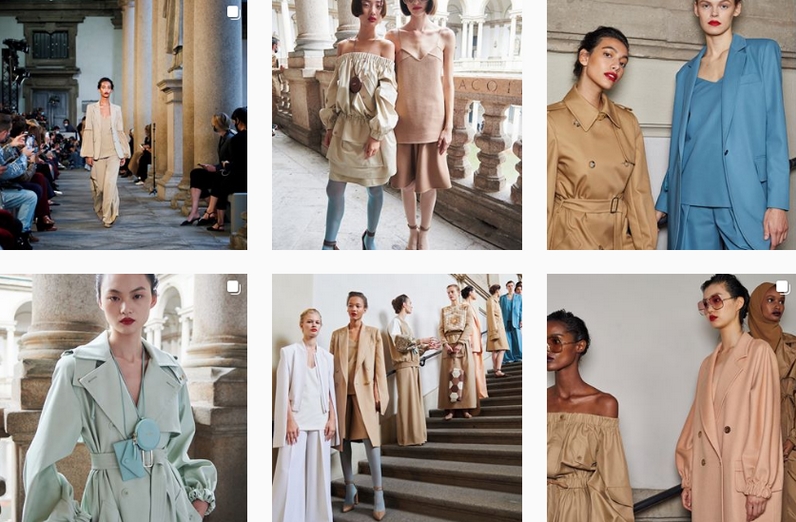Ian Griffiths, the British designer of the luxury powerhouse Max Mara, is making clothes for “the third Italian renaissance”.
At Milan fashion week the mood is optimistic for the post-pandemic future, and bursting with national pride. The clothes on the catwalks radiate confidence that next spring Italy will be dressed for the beach in swimsuits and sandals, or for the office in pastel trouser suits.
There is not a tracksuit in sight. And while coordinating designer masks are the front-row accessory of the season, face coverings are notably absent from the catwalk vision of what next summer will look like.

Etro is banking on women buying into classic Italian riviera style, with high-waisted shorts and shirts knotted at the waist, brightly printed bralettes and rope sandals. “I realised this collection had to be about Italy,” said the designer, Veronica Etro.
At Sportmax, models with beach-damp hair and bronzed cheekbones wore fine-knit dresses in sunshine yellow, which is shaping up to be this week’s standout colour. Alberta Ferretti showed her airy, ice-cream coloured sundresses in a 15th-century castle in Milan, “to reinforce the message of strength and solidarity that Milan and Italy have shown throughout this difficult situation”.

“In Italy’s postwar second renaissance, Max Mara was one of the companies that developed the idea of Bella Figura, which is about making yourself look and feel at your best in order to perform at your best,” said Griffiths after his show.
“When I started designing this collection I was locked down at my cottage in Suffolk, and I didn’t know if we would be having this show, or even if these pieces would get made. But Italy handled the coronavirus crisis exceptionally well, and the fact that fashion week is happening here is a credit not just to this industry but to the way all of Italy has behaved. I am very proud of Italy.”
Mask-wearing is diligently observed among showgoers at Milan fashion week – getting a chandelier earring caught in the ear loops as you remove your mask to knock back an espresso is a new occupational hazard – but unlike at New York and London fashion weeks, where Christian Siriano and Bora Aksu designed masks to complement the clothes, face coverings have been notably absent from catwalk collections. The industry is banking on the imminent return of dressing-up.

“If you’re only going to the office two or three days a week instead of five, or only going out in the evening once or twice a week, then those become events to dress up for,” said Griffiths, who added caped or ruffled sleeve details to lightweight trouser suits.
The Max Mara show was held in a courtyard. “It is important to me to do a real show, because Max Mara is about real clothes,” the designer said. “And even though we could only have a small audience this season, there is still a special chemistry in watching people react to clothes they are seeing in front of them for the first time.”
It was left to Donatella Versace, of all people, to strike a note of caution. To a muffled underwater soundtrack, models picked their way through a scene of shipwrecked Versace grandeur, past columns at half-mast and crashed medusa heads.
“Today was supposed to be a usual show, with media and buyers and celebrities in attendance,” the designer said, explaining that “after careful evaluations” she had decided to stage it behind closed doors. The only audience members were Versace employees from the Milan HQ and the production facility in Novara, tested for the virus before admittance. “For the very first time, I was able to invite my team and sit them front row. I cannot fully express how happy this made me,” Versace said. She described the thigh-high slit mermaid gowns, perky skater skirts and embellished bikini tops as meant for “dreaming, escapism – and being disruptive.”
guardian.co.uk © Guardian News & Media Limited 2010
Published via the Guardian News Feed plugin for WordPress.


